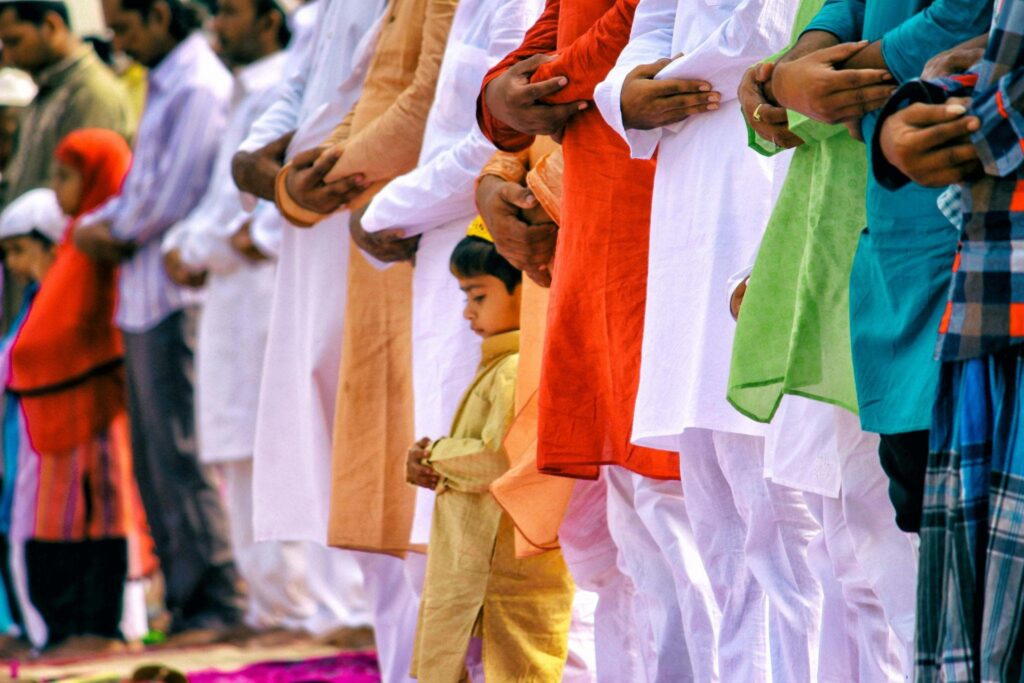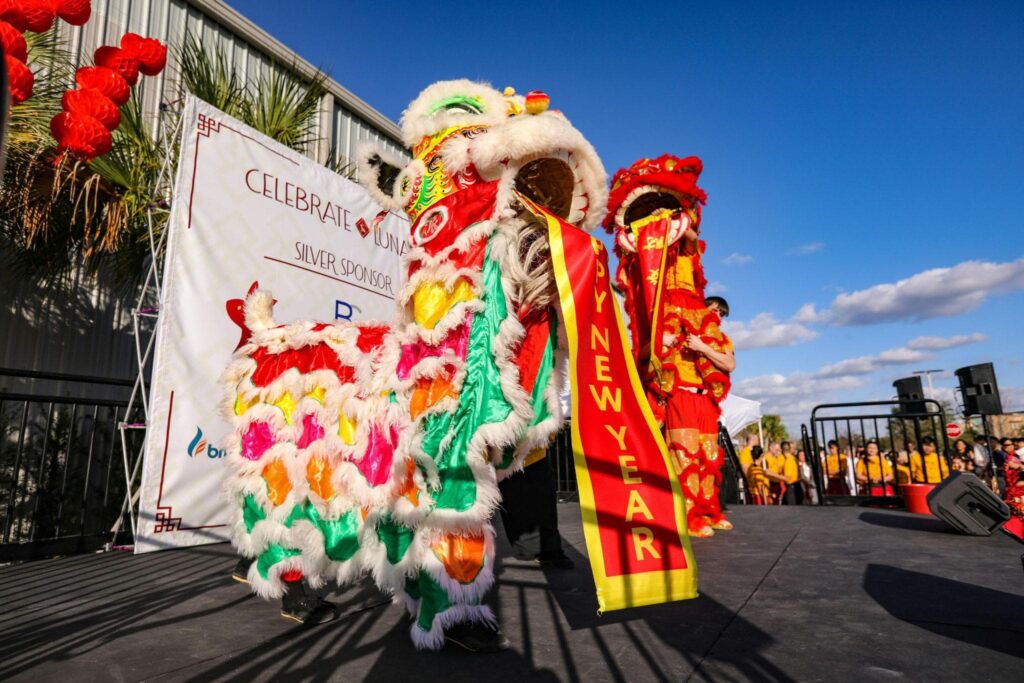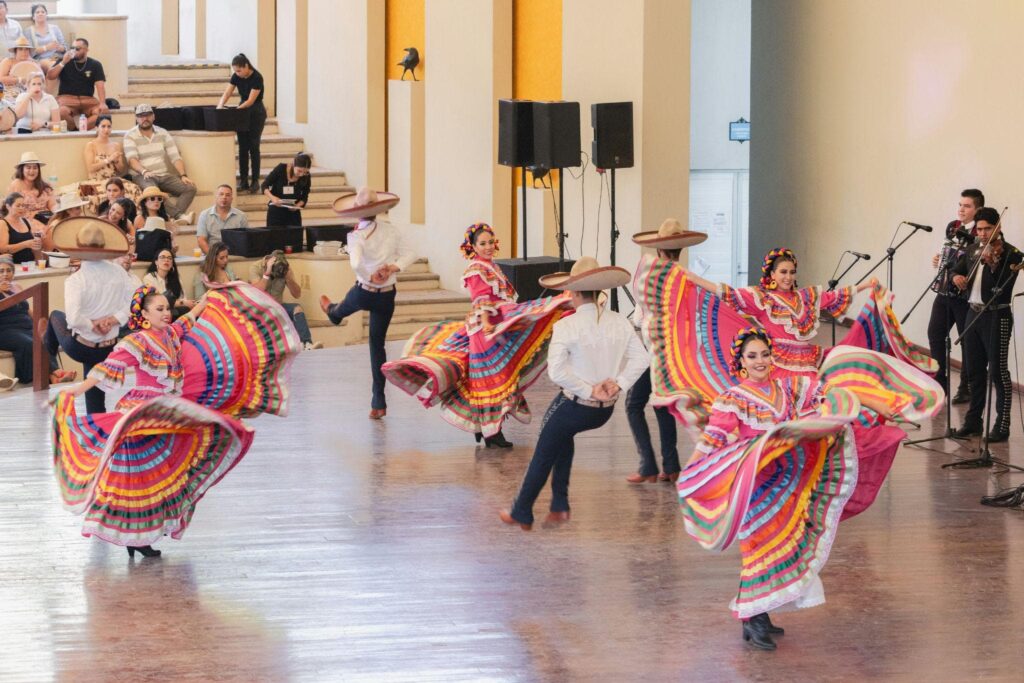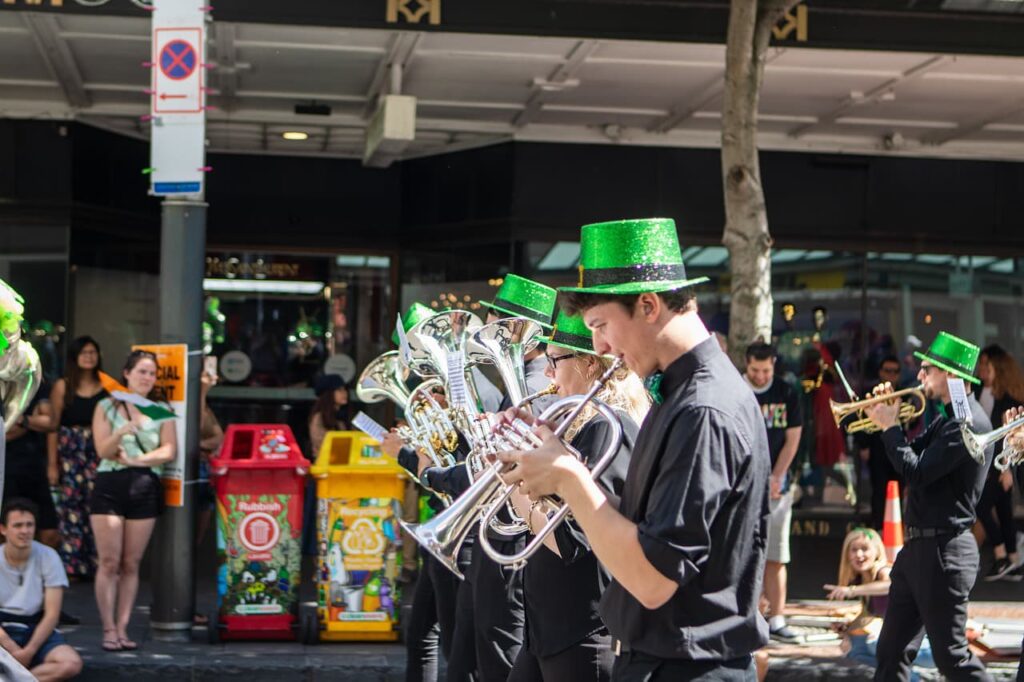America has long been celebrated as a vibrant melting pot, a nation where diverse cultures converge to create a genuinely unique societal fabric. This rich intermingling is perhaps more evident than in the dynamic calendar of international festivals now deeply woven into the very soul of American cities. These celebrations, brought to U.S. shores by generations of immigrants and diverse communities, have transformed urban landscapes into bustling global cultural hubs. From ancient rituals to modern interpretations, these festivities offer far more than mere entertainment; they serve as powerful conduits for cultural exchange, fostering more profound understanding and strengthening community bonds across the nation. They are a testament to America’s enduring capacity to embrace and integrate global traditions, creating a beautiful mosaic of shared human experience. This widespread adoption of international festivals reflects a profound cultural evolution, demonstrating how America’s identity is continuously shaped and enriched by its global connections. These celebrations offer invaluable opportunities for residents and visitors alike to immerse themselves in traditions that might otherwise seem distant, fostering a spirit of global citizenship within their local communities. They also represent a vital bridge between generations, allowing cultural heritage to be passed down and reinterpreted in a contemporary American context, ensuring that the vibrancy of these traditions endures.
I. Embracing the Colors of Unity: Holi in the U.S.
The joyous Hindu festival of Holi, universally known as the “Festival of Colors,” has found a spectacularly vibrant home in American cities, transforming parks and public spaces into canvases of kaleidoscopic delight. This celebration, steeped in rich South Asian tradition, embodies a spirit of renewal, friendship, and playful abandon, now heartily embraced across the United States. Its core ritual of throwing colored powders and water has become a universal symbol of joy and camaraderie, signifying the arrival of spring and the triumph of good over evil, a message that resonates broadly.
In many American urban centers, particularly those with significant South Asian populations, public parks and community centers burst into a symphony of colors. Participants, both from the diaspora and curious newcomers, joyfully douse each other with brightly colored powders (gulal) and water, creating a stunning visual spectacle and an atmosphere of uninhibited fun. Beyond the iconic color-throwing, celebrations often include the lighting of traditional bonfires (Holika Dahan) on the eve of Holi, symbolizing the burning of evil and the triumph of righteousness. This is typically followed by communal feasts featuring a delectable array of Indian sweets and savory snacks, often accompanied by traditional drinks.
The adaptation of Holi in the U.S. is genuinely remarkable. While retaining its spiritual essence, many American Holi events have evolved into large-scale public festivals that draw thousands from diverse backgrounds. Consider the expansive Holi celebrations organized by various spiritual centers across the country, where communities gather in large numbers, transforming the landscape into a vibrant sea of color and sound. Such gatherings beautifully illustrate how this ancient tradition can transcend geographical and cultural boundaries, uniting people in shared euphoria and a spirit of universal brotherhood. Similarly, bustling metropolises frequently host massive public Holi events, often featuring live music, fusion artists, captivating dance performances, and an array of food stalls, creating an immersive cultural experience that feels both authentic and welcoming. These American Holi celebrations beautifully blend traditional rituals with local interpretations, creating unforgettable experiences that bring diverse crowds together in vibrant solidarity, illustrating the profound impact of cultural diffusion.
II. A Feast of Faith and Community: Eid in American Metropolises

Eid al-Fitr and Eid al-Adha represent pivotal moments of spiritual reflection, profound communal joy, and deep gratitude for Muslim communities worldwide, and their celebration in American cities is no less significant. Eid al-Fitr, marking the joyous conclusion of Ramadan, the month of fasting, prayer, and introspection, and Eid al-Adha, commemorating the willingness of Prophet Ibrahim (Abraham) to sacrifice his son, both embody devotion, selfless giving, and a spirit of community. They are times for spiritual renewal, gratitude, forgiveness, and strengthening family and community ties.
Across American metropolises, stretching from major coastal cities to inland hubs, Muslims begin their Eid day with congregational prayers. These prayers are often held not just in mosques but also in expansive public spaces, such as convention centers, large parks, or even rented sports stadiums, to accommodate the immense crowds of worshippers who come together as one unified body. The atmosphere is one of reverence, peace, and collective spiritual upliftment as families arrive dressed in their finest attire, embodying a sense of communal dignity and celebration.
Following prayers, the festivities truly begin. A central tradition of Eid is the giving of gifts, especially to children, often in the form of money (known as Eidi), symbolizing generosity and joy. Families gather for elaborate meals, sharing sumptuous feasts that feature traditional dishes passed down through generations, varying widely based on ethnic origin—from rich biryanis and kebabs to fragrant tagines and sweet pastries. These meals are frequently open to extended family, friends, and neighbors, regardless of their faith, embodying the spirit of hospitality and communal warmth.
Community-wide Eid festivals frequently spring up in public parks and civic centers. These events are vibrant showcases of Islamic culture, offering a diverse array of attractions, including cultural performances, traditional music, lively bazaars selling unique goods, and joyous activities for children, from festive games to creative crafts. Areas with significant Muslim populations often host particularly extensive celebrations that transform entire neighborhoods into vibrant hubs of festivity and cultural pride. These American Eid celebrations beautifully showcase the diversity within the Muslim community itself while also extending a warm welcome to non-Muslim neighbors, fostering vital interfaith understanding, and building bridges of respect and friendship. They are potent reminders of the strength found in faith and community, creating moments of shared humanity.
III. Celebrating Freedom and Heritage: Juneteenth Across the Nation

While distinctly American in origin, Juneteenth, which commemorates the emancipation of enslaved African Americans, resonates with the same profound spirit of cultural affirmation and collective celebration as many international festivals. Its inclusion here highlights its pivotal role in the diverse tapestry of American cities, observed with a communal joy that often mirrors global festivities. June 19th, 1865, marks the crucial day when Union soldiers arrived in Galveston, Texas, delivering the news of freedom to the last enslaved African Americans, more than two and a half years after the Emancipation Proclamation. This date now serves as a powerful reminder of resilience, the long fight for justice, and the enduring strength of the human spirit in the face of profound adversity.
Across the nation, from historically Black communities to wider city-wide celebrations, Juneteenth is marked by vibrant parades, lively street fairs, and joyous cookouts that bring families and friends together. The festivities often feature elements that hold deep symbolic meaning. For example, the color red is prominently featured in decorations, clothing, and particularly in food and drink, such as red velvet cake, red soda, or hibiscus tea. This vibrant hue is widely understood to symbolize the resilience and bloodshed of enslaved ancestors, serving as a powerful visual reminder of the sacrifices made and the journey toward freedom.
Educational events, historical reenactments, and soul-stirring musical performances are central to the commemorations. One might find gospel choirs singing hymns of triumph and hope, jazz ensembles improvising intricate melodies that speak of struggle and liberation, or blues musicians weaving narratives through their soulful tunes. Many events also feature public readings of the Emancipation Proclamation, insightful discussions on African American history, and art exhibitions that celebrate the cultural contributions of Black artists. Major cities across the country host vast and impactful Juneteenth celebrations, often involving civic leaders, community organizers, and a broad cross-section of residents who come together in solidarity. These events are not only about joyous celebration but also about solemn reflection, crucial education, and a recommitment to the ideals of freedom and equality for all. Juneteenth in American cities has evolved into a powerful blend of remembrance, education, and jubilant celebration, transcending its origins to become a significant multicultural holiday that champions freedom and heritage for all Americans, emphasizing the ongoing journey towards a more perfect union.
IV. Beyond the Big Three: A Kaleidoscope of Global Festivities
A. Asian Cultural Celebrations: Lunar New Year and Diwali

Beyond the well-known festivals, American cities burst with a multitude of other international celebrations, particularly from diverse Asian cultures, transforming urban landscapes into vibrant hubs of tradition and festivity. The Lunar New Year, observed by East Asian communities, including Chinese, Korean, and Vietnamese populations, ignites cities across the nation with spectacular displays. These celebrations, typically occurring in late January or February, are a time for family reunions, honoring ancestors, and ushering in good fortune for the coming year. Vibrant dragon and lion dances weave through crowded streets, accompanied by the percussive rhythm of drums and firecrackers, which are believed to ward off evil spirits and bring good fortune and prosperity. Chinatown districts, in particular, become alive with elaborate parades featuring intricate floats, captivating cultural performances, and the joyful exchange of red envelopes (hongbao), symbolizing good luck and prosperity, particularly for children. Families gather for elaborate feasts, enjoying traditional dishes such as dumplings, long noodles, and sticky rice cakes, each with symbolic meanings related to health, longevity, and wealth.
Similarly, Diwali, the Hindu festival of lights, has gained immense prominence across the U.S., reflecting the significant growth of South Asian communities. Cities with notable Indian populations glow with countless lamps (diyas), intricate rangoli designs adorning doorways, and spectacular fireworks displays that light up the night sky. Diwali is a five-day festival symbolizing the triumph of light over darkness, good over evil, and knowledge over ignorance. Community centers and temples host grand celebrations featuring puja (prayers), vibrant cultural programs with traditional music and dance performances, and an abundance of delicious Indian sweets and savory snacks shared generously among friends and family. These celebrations are crucial in preserving heritage for diaspora communities, providing a vital connection to their roots, and simultaneously enriching the broader American cultural landscape by sharing these profound traditions with the wider public, fostering a deeper appreciation for their spiritual and artistic dimensions.
B. European and Latin American Flavors: Oktoberfest, Cinco de Mayo, and More

The European and Latin American traditions have also found steadfast homes and passionate followings in American cities, evolving into large-scale public events that celebrate heritage with infectious enthusiasm. Oktoberfest, the iconic German beer festival originating in Munich, is celebrated with remarkable authenticity and scale in many American communities, especially those with strong German immigrant histories. During September and October, these areas transform into lively Bavarian villages, complete with participants donning traditional attire like lederhosen and dirndls, clinking massive steins of German beer, dancing to lively Oompah bands, and feasting on an array of bratwurst, sauerkraut, and giant pretzels. It’s a testament to the enduring cultural influence of German immigration and has become a beloved annual event for locals and tourists alike, drawing hundreds of thousands who come to partake in the festive atmosphere, regardless of their ancestry.
Meanwhile, Cinco de Mayo, though commemorating a specific Mexican military victory (the Battle of Puebla), has become a widespread celebration of Mexican culture and heritage across the U.S., particularly vibrant in the Southwest and California. Cities erupt with colorful parades, lively mariachi bands whose melodies fill the air, traditional folk dancing (ballet folklórico) showcasing intricate costumes and movements, and an abundance of authentic Mexican cuisine. It’s a day for Mexican Americans to express pride in their heritage and for broader communities to appreciate the rich cultural contributions of Mexico, fostering a spirit of shared appreciation.
And, of course, Irish Festivals, culminating in the globally recognized St. Patrick’s Day parades in major cities, demonstrate how deeply embedded European heritage is within American society. Millions line the streets to watch elaborate parades featuring the resonant sounds of bagpipes, energetic step dancers, and creative Irish-themed floats, followed by boisterous celebrations in Irish pubs and community centers. These festivals, while originating from specific nations, have evolved into distinctly American adaptations, drawing broad participation and showcasing the rich tapestry of ancestries that define the country, reinforcing the idea that American culture is a dynamic, ever-evolving mosaic of global influences.

V. The Impact and Evolution of International Festivals in the U.S.
The proliferation of international festivals across American cities represents more than just a vibrant calendar of events; it signifies a profound and multifaceted impact on American society. These celebrations are invaluable contributors to cultural diversity, actively fostering cross-cultural understanding by inviting participants to experience traditions, music, food, and art from around the globe. This direct engagement breaks down barriers, dispels stereotypes, and builds empathy, allowing people to connect on a human level beyond differences in background. When someone partakes in a traditional dance from another culture or tastes a dish they’ve never encountered, it creates a moment of shared humanity that transcends mere observation, enriching perspectives, and broadening horizons.
Economically, these festivals are significant drivers, boosting local tourism, supporting small businesses, and creating temporary employment opportunities. They transform neighborhoods into bustling marketplaces, generating revenue for local vendors, restaurants, and hotels. Urban planners and city councils often recognize the financial benefits, providing support for these events as part of their urban development and cultural tourism strategies. For instance, a major cultural festival can inject substantial funds into local economies, creating a positive cycle of investment and growth for the communities that host them.
Moreover, we’ve witnessed a fascinating evolution: many festivals, once niche gatherings primarily for specific immigrant communities have blossomed into mainstream public spectacles, attracting broad participation from all walks of life. This transition often involves a degree of adaptation, where organizers might incorporate American elements or offer explanations of traditions for a broader audience, making them more accessible to newcomers. However, they steadfastly retain their core cultural authenticity, serving as crucial anchors to heritage for the communities that originate them. This delicate balance between preservation and adaptation is key to their success and longevity in the American landscape.
Crucially, these festivals serve as living classrooms, preserving heritage for diaspora communities and educating younger generations about their roots. For children growing up in America, these events provide tangible, sensory connections to their ancestral lands, reinforcing cultural pride and a strong sense of identity. They also offer a dynamic platform for dialogue and connection in an increasingly interconnected world, fostering a sense of shared belonging that transcends individual origins. They highlight how diverse traditions contribute to a stronger, more vibrant national identity, continually shaping and enriching the American narrative. These festivals are not just about looking back; they are about building a future where cultural understanding is a cornerstone of society, promoting harmony and mutual respect.
Conclusion
In essence, the festivals of the world, now enthusiastically celebrated in American cities, are far more than mere calendar entries; they are living, breathing testaments to America’s enduring capacity for cultural assimilation and vibrant diversity. From the explosion of colors at Holi to the communal feasts of Eid, the profound remembrance of Juneteenth, and the countless other global traditions that enliven our streets, these events collectively weave an intricate and beautiful tapestry. They underscore how distinct cultural identities can thrive and be celebrated openly, enriching the lives of all Americans. These festivals build bridges, foster understanding, and remind us that unity can be found in the joyful embrace of our differences. As American cities continue to evolve, these cherished celebrations will undoubtedly remain vital expressions of our shared humanity, continually reaffirming that diversity is not just a characteristic of America but its enduring strength and its greatest gift to the world.